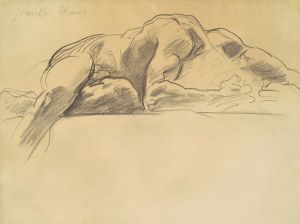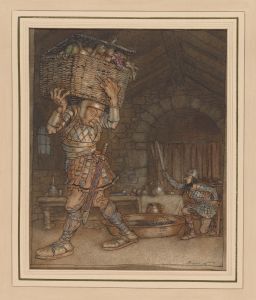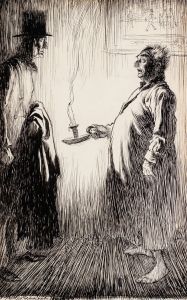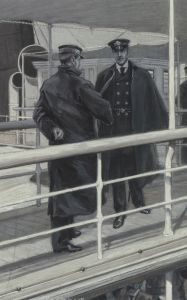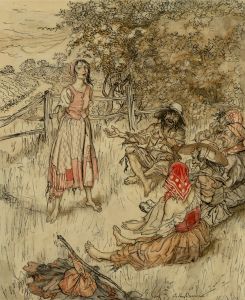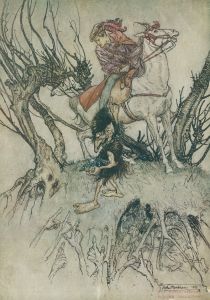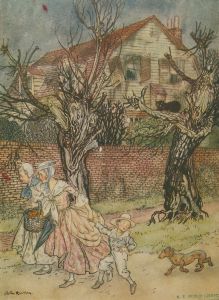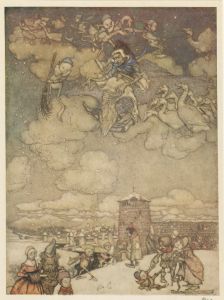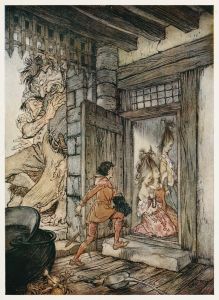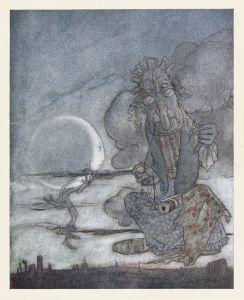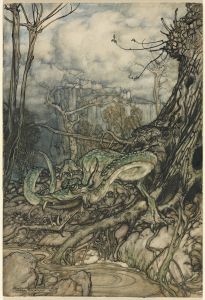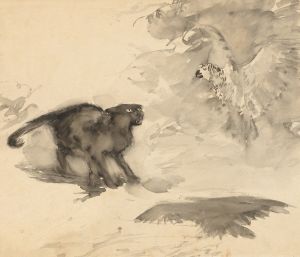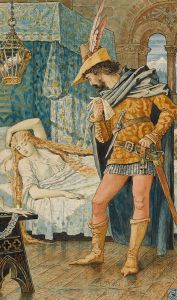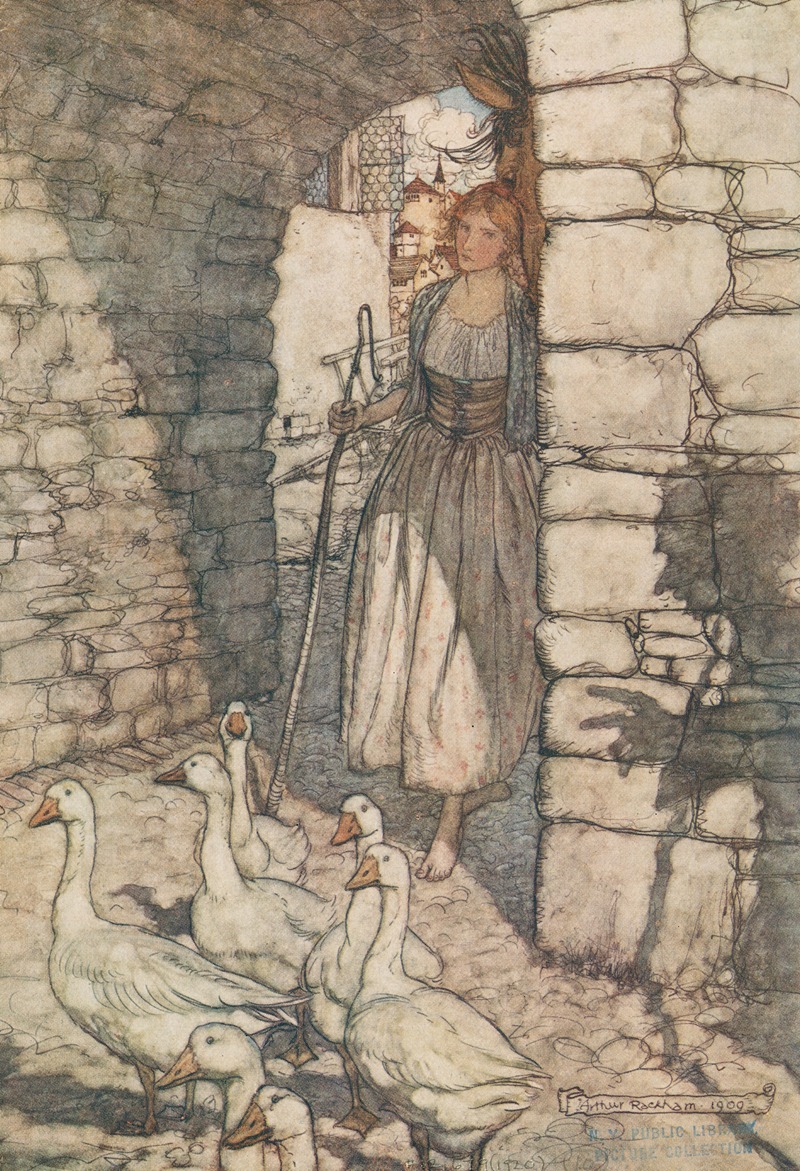
Alas! dear Falada, there thou hangest
A hand-painted replica of Arthur Rackham’s masterpiece Alas! dear Falada, there thou hangest, meticulously crafted by professional artists to capture the true essence of the original. Each piece is created with museum-quality canvas and rare mineral pigments, carefully painted by experienced artists with delicate brushstrokes and rich, layered colors to perfectly recreate the texture of the original artwork. Unlike machine-printed reproductions, this hand-painted version brings the painting to life, infused with the artist’s emotions and skill in every stroke. Whether for personal collection or home decoration, it instantly elevates the artistic atmosphere of any space.
Arthur Rackham was a prominent British illustrator known for his distinctive style and contributions to the world of book illustration in the late 19th and early 20th centuries. One of his notable works is the illustration titled "Alas! dear Falada, there thou hangest," which is part of his illustrations for the fairy tale "The Goose Girl."
"The Goose Girl" is a German fairy tale collected by the Brothers Grimm and published in their collection "Grimm's Fairy Tales" in 1815. The story revolves around a young princess who is betrayed by her maid and forced to become a goose girl while the maid takes her place. A significant element of the tale is the talking horse, Falada, who is killed by the maid but continues to speak even after death, providing a crucial revelation that leads to the restoration of the princess's rightful place.
Arthur Rackham's illustration captures the poignant moment when the princess laments the fate of Falada, who has been killed and whose head is hung on a wall. Rackham's style is characterized by his use of intricate line work, subtle color palettes, and a blend of realism with fantasy elements, which brings the fairy tale to life in a vivid and emotionally resonant manner.
Rackham's illustrations were part of the 1909 edition of "Grimm's Fairy Tales," which included numerous other tales and illustrations. His work on this collection is considered one of his masterpieces, showcasing his ability to convey the magical and sometimes dark nature of fairy tales. Rackham's illustrations are known for their attention to detail and the ability to evoke the mood and atmosphere of the stories they accompany.
The illustration "Alas! dear Falada, there thou hangest" is a testament to Rackham's skill in capturing the emotional depth of the characters and the narrative. His work has been praised for its ability to appeal to both children and adults, offering layers of meaning and artistic beauty that can be appreciated on multiple levels.
Arthur Rackham's contributions to the field of illustration have left a lasting impact, influencing generations of artists and illustrators. His work continues to be celebrated for its artistic excellence and its role in bringing classic tales to life for readers around the world. Rackham's illustrations, including "Alas! dear Falada, there thou hangest," remain popular and are often featured in exhibitions and collections dedicated to the art of illustration.
In summary, Arthur Rackham's illustration "Alas! dear Falada, there thou hangest" is a significant piece within his body of work, exemplifying his unique style and his ability to capture the essence of fairy tales. His illustrations for "Grimm's Fairy Tales" have become iconic, cementing his legacy as one of the foremost illustrators of his time.






